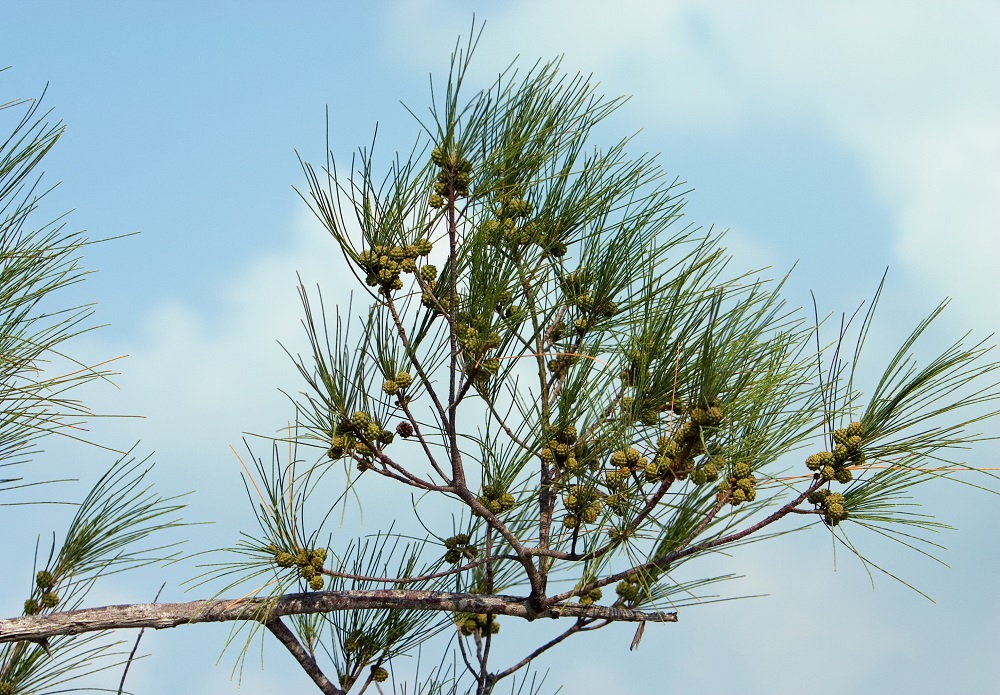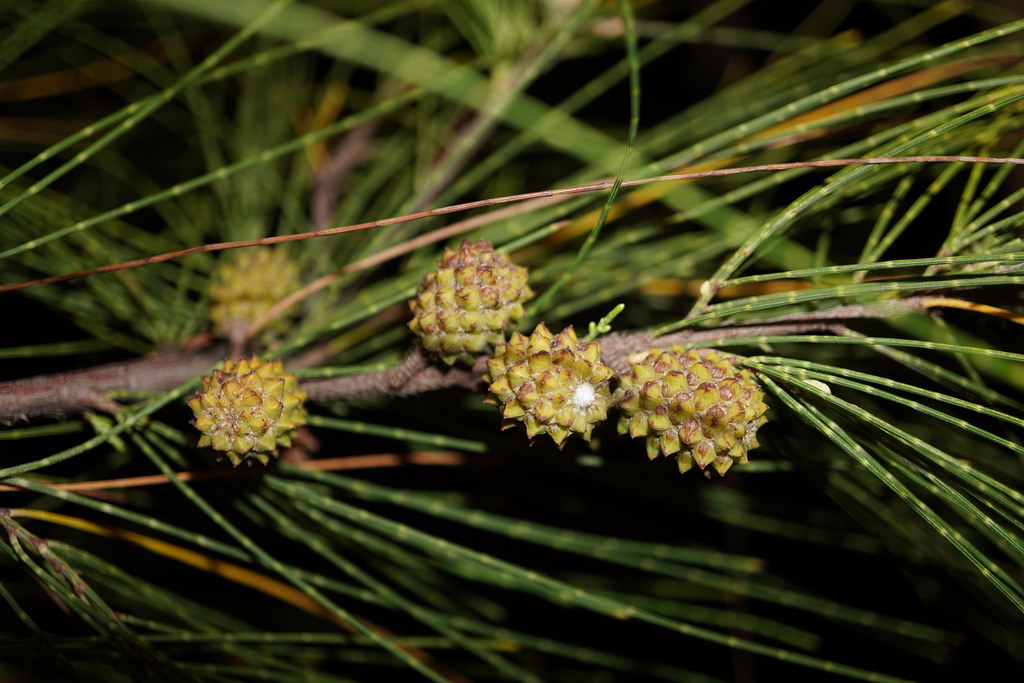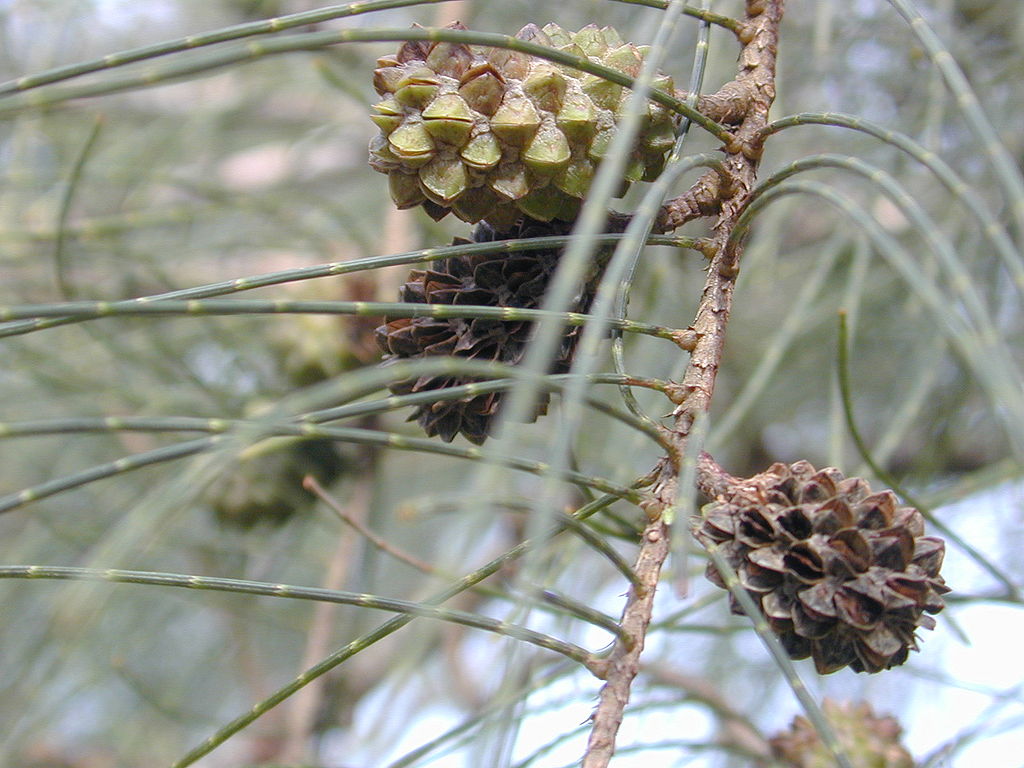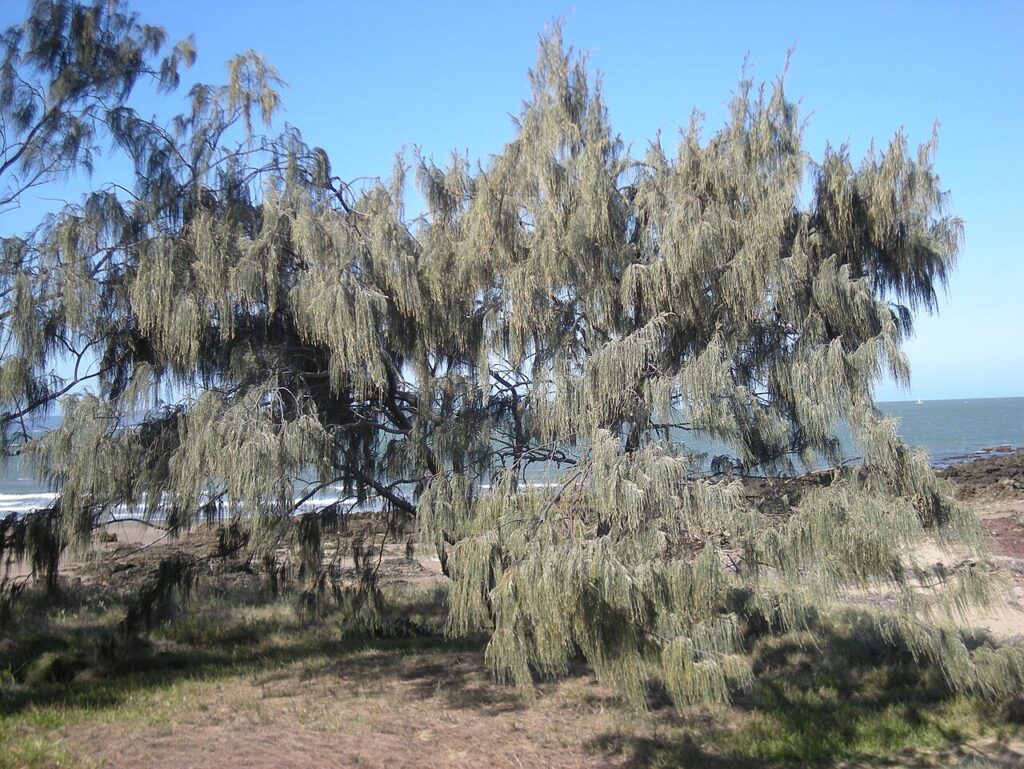( Jhau in Hindi)
Casuarina is an evergreen tree growing to 6–35 m (20–115 ft) tall. The foliage consists of slender, much-branched green to grey-green twigs. The flowers are produced in small catkin-like inflorescences; the male flowers in simple spikes 0.7–4 cm (0.28–1.57 in) long, the female flowers on short peduncles. Unlike most other species of Casuarina (which are dioecious) it is monoecious, with male and female flowers produced on the same tree.
Casuarina trees are known for their distinctive, needle-like leaves and can grow up to 100 feet tall. Casuarina trees have a number of uses, including landscaping, timber, erosion control, shade, wildlife habitat and windbreaks.
Casuarina trees have a number of uses. These include:
- Landscaping: Casuarina trees are often used as ornamental trees in landscaping due to their attractive, evergreen foliage and ability to grow in a variety of soil types.
- Timber: The wood of casuarina trees is dense and strong, making it suitable for use in construction, making furniture, and other wood products.
- Erosion control: Casuarina trees have a fibrous root system that helps to stabilise soil and prevent erosion. They are often used in coastal areas to protect against beach erosion.
- Shade: Casuarina trees provide shade and can be used to create a natural canopy for outdoor spaces.
- Wildlife habitat: Casuarina trees provide habitat and food for a variety of wildlife, including birds and small animals.
- Windbreaks: Casuarina trees can be planted in rows to create windbreaks, which can help to protect crops and other plants from strong winds.
Overall, casuarina trees are versatile and have a variety of uses in many areas. The bark is useful for producing packaging material and the bark for tanning, colouring and medicinal substances.
Casuarina tree: Quick facts
| Family Name | Casuarinaceae |
| Species | Casuarina defungens, Casuarina hexagona |
| Height | Up to 100 feet |
| Botanical name | Casuarina |
| Native area | Australia, Indian Subcontinent and Southeast Asia |
| Width | 1.5 m |
| Environmental Impact | Positive |
| Maintenance | Low |
| Climatic zone | Cool to mild tropical |





Source: Wikipedia
169 Vitogo Parade Lautoka, Fiji
Mon – Thu: 8:00 am – 4:30 pm
Fri: 8:00 am – 4:00 pm
Useful Links
City Map View
Lautoka City Council © 2024. All Rights Reserved

